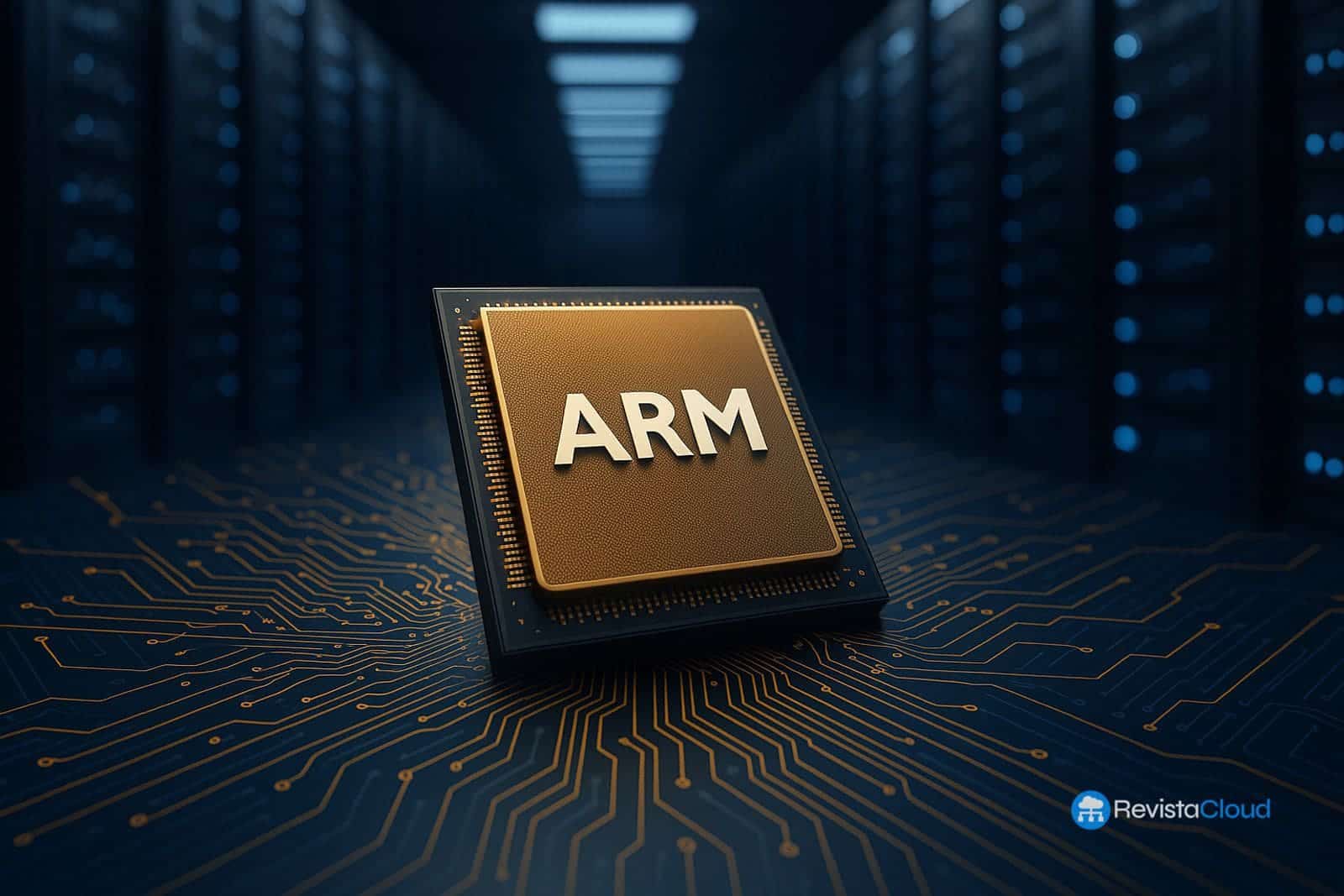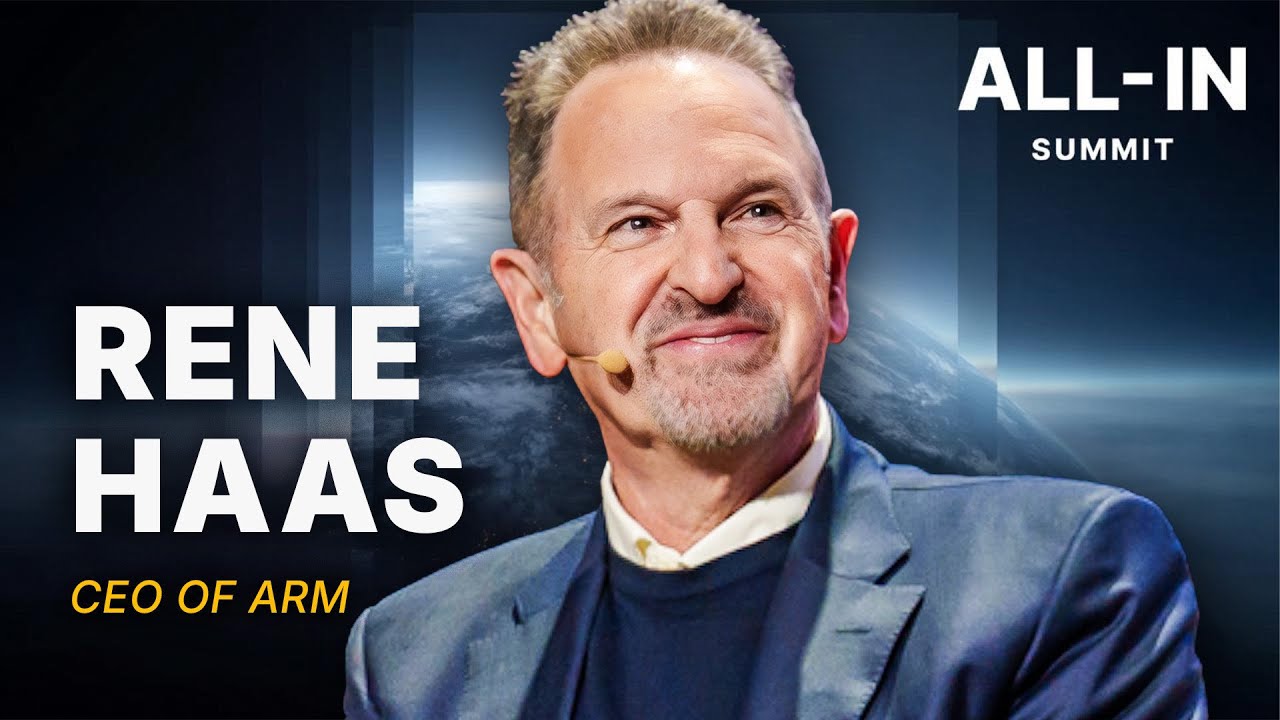The question circulating in Silicon Valley, Washington, and the stock exchanges for the past two years sounds simple but conceals the full complexity of chip geopolitics: Can Intel become the Western alternative to TSMC if Taiwan suffers a severe disruption? This thesis has made headlines following public investments in the U.S. and the surge in AI computing spending. However, this week, Rene Haas, CEO of ARM, delivered a reality check: “Intel has been penalized” by past decisions, and when you fall behind in semiconductors, catching up is “very, very difficult.”
Haas spoke on the All-In Podcast, where he bluntly discussed three areas: missed opportunities (notably, mobile), EUV delays (extreme ultraviolet lithography, which now defines the cutting edge), and a cultural clash regarding what “manufacturing” means in the West versus Asia. The underlying message wasn’t an obituary for Intel—which is rapidly regrouping—but a warning about the inertia in a sector where each cycle lasts years, capital is measured in tens of billions, and ecosystems (tools, IP, talent, anchor clients) take time to mature.
“Missing two cycles punishes the clock”: the mobile opportunity that was missed
Haas pointed out that Intel “missed” mobile. Essentially, this means the company failed to capitalize on the mid-2000s and early 2010s smartphone boom. The well-known industry anecdote: Apple considered outsourcing the iPhone SoC to Intel; Paul Otellini, then CEO of Intel, rejected the proposal due to profitability doubts. He later called that decision one of the biggest errors of his career. Intel launched Atom, its line of low-power SoCs, but didn’t fit into the iPhone or the vast majority of Android designs; rival architectures such as ARM from Qualcomm, Samsung, and Apple ended up dominating that cycle.
For Haas, the takeaway is simple: “Designing architectures and ecosystems takes a long time.” When a player misses two or three windows—be it in product or node—the entire sector’s curve is impacted. Others move forward; falling behind results in delays in customers, tools, processes, and reputation.
EUV: the decision that started “late” and now defines TSMC’s leadership
The second point Haas discusses involves a topic rarely named explicitly: EUV. Extreme ultraviolet lithography is the technology enabling nanometer-scale transistor fabrication at reasonable cost and performance. Adopting EUV early required massive investments in tools (ASML), materials, metrology, and internal processes.
“Intel was also penalized in manufacturing during the EUV transition,” Haas said. He believes the company didn’t invest at the same pace as TSMC a decade ago, which created a gap. The practical result is clear: Apple, NVIDIA, and AMD—the most demanding clients with the highest volume at the forefront—manufacture their advanced chips in TSMC. With each generation—from N7 to N5, N4, N3, and now N2—TSMC has strengthened its process advantage, while Intel works to regain credibility with its Intel 4 / 3 / 20A / 18A roadmap and future 14A.
Haas’s assessment does not dismiss Intel’s current efforts but emphasizes the ongoing challenge: “TSMC has the best factories in the world” and a client pipeline of market-leading companies fueling its virtuous cycle of learning and scale.
Beyond factories: the “prestige” of manufacturing and cultural challenges
The third point introduced by ARM CEO Haas steps outside engineering into the sociology of the industry. “In the West, we haven’t trained a generation that views manufacturing work as profitable and prestigious,” he noted. “It’s seen as a ‘blue-collar’ job to be avoided. In Taiwan, that’s not the case; saying you work at TSMC is considered highly prestigious.”
This cultural difference matters when it comes to building long-term manufacturing ecosystems. A single iconic megafactory isn’t enough: it requires local supplier networks, universities focused on process engineering, skilled technicians eager to work in 24/7 production lines, and quality managers who understand that every hour of performance counts. It’s a national effort, not just a single company’s project.
Haas summarized bluntly: The U.S. needs a “ground-up reconstruction” to make advanced manufacturing a sustainable reality. This isn’t only about Intel: it involves multiple industries and calls for long-term political support.
The million-dollar question: can Intel be the “insurance policy” against TSMC?
The context of Haas’s statements is a growing politicized debate over whether Intel Foundry can become a sufficiently large and reliable alternative to support the supply chain in case of a crisis in Taiwan. Recently, U.S. administrations have offered incentives (CHIPS Act and state programs), and companies like NVIDIA have invested in domestic capacity to secure part of their supply.
Haas does not deny the need, but warns of the difficulty. His linear argument: when you fall behind in process, catching up is difficult, and TSMC continues to advance. If Taiwan’s advantage lies in process and ecosystem, then the solution involves more than just capex; it demands time, anchor clients, tool loyalty (EDA, IP), and consecutive successful deliveries.
Current landscape: massive investments, AI demand, and physical limits
Meanwhile, the game won’t wait: AI has spiked accelerator, HBM, and data center demand, with racks consuming 50–80 kW and campuses reaching hundreds of MW. NVIDIA, AMD, and hyper-scalers plan years ahead; TSMC and partners secure EUV supply and packaging; Intel invests in foundry capacity to attract outside clients. Time is again a critical factor: process milestones (e.g., 18A and 14A) and packaging advancements will be scrutinized by designers working with tight schedules.
In this context, Haas’s comments serve as a reminder: the market compares wafer by wafer—yields, costs, and timelines. Trust is built on silicon and reliable deliveries, not just presentations.
A note on ARM: architecture neutrality and manufacturing dependency
What ARM adds nuance. The company licenses architecture and IP to nearly everyone: Apple, Qualcomm, NVIDIA, Amazon (Graviton), Samsung, MediaTek… Its business depends equally on the success of its licensees and sufficient manufacturing capacity to produce its designs. For ARM, having Intel and others achieve advanced capacity is positive; but its CEO recognizes an uncomfortable reality: TSMC leads the process, and shifting it from the throne takes years and well-placed decisions.
What’s next: what needs to happen to close the “gap”?
Three necessary (though not sufficient) conditions emerge from Haas’s discourse and the sector context:
- Flawless execution of process (and packaging) roadmap by Intel: milestones on the schedule must meet performance expectations.
- Anchor clients confirming leading-edge production in the Western foundry—not just press releases—with volumes and realistic timelines.
- Ecoystem: around EDA tools, IP libraries, OSAT (advanced testing and packaging), universities, and a local supply chain that guarantees parts and talent.
Additionally, Haas calls attention to a “cultural shift”: making manufacturing once again a prestigious occupation in the West. Without people willing to spend their careers in lines and clean rooms, EUV miracles won’t happen.
Conclusion: a warning for managers and investors
The words of ARM’s CEO aren’t a prophecy, but a warn: chip clock doesn’t forgive. Intel is in a race against time to regain process and manufacturing leadership; TSMC holds a competitive advantage, and the U.S. pushes with incentives. But the equation involves people, culture, and time. History shows that lost windows, like those of the mobile era and EUV adoption, never return—and when they do, they come with interest.
For clients and partners, diversification remains key. If Intel manages to establish a “back-up plan,” the industry will be more resilient; if not, it will have to keep navigating with geographically concentrated capacity and associated risks. Either way, reading Haas isn’t just criticism—it’s a diagnosis of the current moment: process leadership is the most challenging asset to rebuild.


